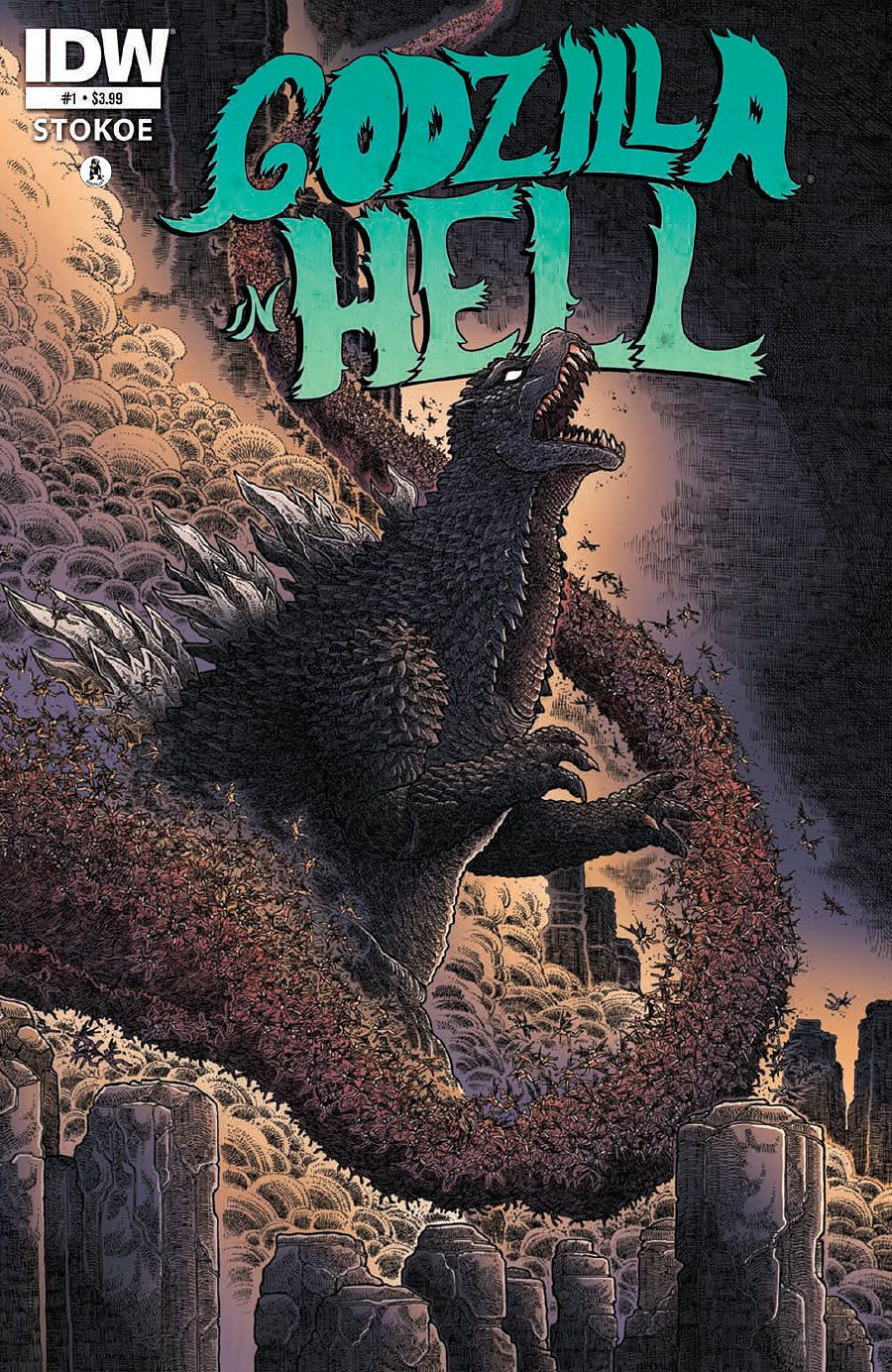"Godzilla in Hell" #1 is part philosophical tale, part art book and a heaping helping of kaiju smackdown starring Godzilla, with James Stokoe wearing all of the hats as the sole creative talent for this debut issue. The cover doesn't list how many parts this series is projected to have nor does it limit "Godzilla in Hell" to a one-shot, but Stokoe gives readers a complete Godzilla adventure that is every bit as prescribed as the most comfortably enjoyable Godzilla stories while still packing in a couple surprises for the reader to absorb alongside the king of all monsters.
Stokoe pits Godzilla against the unknown but adheres to the common concept of a person's (or kaiju's) personal Hell being only what they fear, or -- in the case of Luke Skywalker in "The Empire Strikes Back" in parallel to "Godzilla in Hell" #1 -- only what you take with you. Godzilla, as always, brings his temper and capacity for brawling, neither of which does him any favors in this interpretation of Hell.
With no lettering beyond the "KRSH!" of Godzilla powering up to unleash his atomic breath and the rock-hewn warning of "Abandon all hope ye who enter here," the issue is whatever the reader makes of it: a fast read, a slow read, a dismissible story, an indispensible tale or an artistic study of myths intermingled. Stokoe keeps the tale trim but detailed, as though encouraging the reader to more closely associate with Godzilla, to become the monster as he seeks answers on a desolate, fearsome landscape. Those answers come in fire, human detritus and shifting yet familiar foes that range from conglomerations of various Godzilla antagonists to a mirrored alternate of Godzilla himself.
Stokoe makes every panel in "Godzilla in Hell" an individual piece, worthy of study and analysis. The artwork is rich, detailed and mesmerizing. Stokoe's Godzilla is, visually, everything Godzilla should be: massive, anthropomorphic, emotive and fearsome. Readers are as apt to pump their fists in the air and cheer this Godzilla's victories as they were when they first discovered Toho's greatest creation. Stokoe polishes every panel nicely with atmospheric colors. Every image has an ashy sheen to it that befits the volcanic ambiance one might associate with Hell. Stokoe adds shades of red to the story, bringing the heat and anger.
Reminiscent of the William Stout's style or Ricardo Delgado's work with "Age of Reptiles," the mostly silent "Godzilla in Hell" #1 is a thing of beauty. It's not meant for all readers, but any Godzilla fan that reads this is certain to find something to enjoy and revel in, right up to the final page. With "Godzilla in Hell" #1, IDW proves that there is no such thing as a bad idea and even the oddest pairings have potential for entertaining stories.

